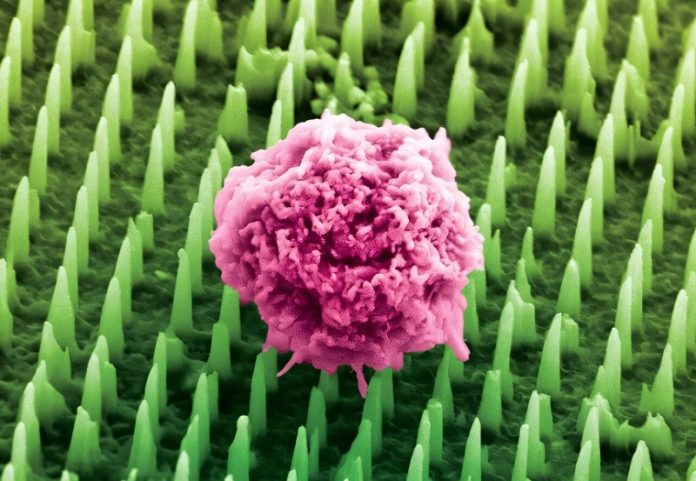
Getting a biopsy is a common but often painful part of diagnosing diseases like cancer and Alzheimer’s.
Millions of people go through this invasive procedure every year, where small pieces of tissue are removed from the body for testing.
Now, researchers have developed a new tool that could make painful biopsies a thing of the past—a small patch made of microscopic needles that can gather important health information without causing pain or damage.
This new technology, developed by scientists at King’s College London, uses a patch filled with nanoneedles—needles so small they are about 1,000 times thinner than a human hair.
These nanoneedles don’t remove tissue.
Instead, they gently press into the surface and collect tiny bits of molecular information, like proteins, fats, and genetic material from cells. Because they don’t cut or damage the skin or organs, the process is painless and can be repeated multiple times in the same spot.
The study, recently published in Nature Nanotechnology, could mark a turning point in how diseases are diagnosed and monitored.
Traditional biopsies are not only painful and risky, but they also remove tissue that can’t be tested again.
With the nanoneedle patch, doctors could track how a disease changes over time, helping them make faster and more accurate decisions.
Dr. Ciro Chiappini, who led the research, said this is the team’s most exciting development in over a decade of working on nanoneedles.
He believes the technology could transform how we treat patients with brain cancer, Alzheimer’s, and other serious diseases. It also offers new possibilities for personalized medicine, where treatments are tailored to each individual.
In early tests, the researchers used the patch on brain cancer tissue from both human samples and mouse models. They were able to gather detailed molecular “fingerprints” from the tissue without harming it.
The collected data was then analyzed using mass spectrometry and artificial intelligence, allowing doctors to see if a tumor was present, whether it was responding to treatment, and how the disease was progressing—at the level of individual cells.
This could be especially useful during brain surgeries. By placing the patch on suspicious tissue, surgeons could get results in about 20 minutes and use that information to decide which areas to remove—making surgery more precise and potentially more successful.
Made with the same technology used to create computer chips, the nanoneedles could one day be added to everyday medical tools like bandages, endoscopes, or even contact lenses.
As Dr. Chiappini puts it, this may be the beginning of the end for painful biopsies, and a step toward faster, safer, and more comfortable disease diagnosis.
Source: KSR.



